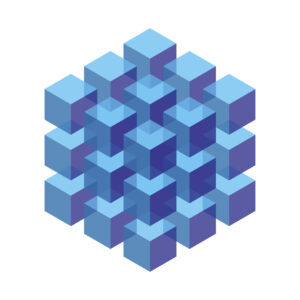Unfortunately, many revenue teams spent the past few years building a tech stack with overlapping investments. After all, there’s a SaaS tool to support darn near everything. And, it almost made sense in an era of “growth at all costs.”
Almost.
However, the days of growing at all costs are now long gone. Today, companies are pressed to grow efficiently and responsibly, looking for positive cash flow and profits. Now revenue teams are reexamining their tech stacks, consolidating solutions where possible, and striving to “do more with less.”

The good news is that the principles governing a lean, mean, efficient tech stack are common to all revenue teams. So, whether you’re expanding, contracting, or just doing a little right-sizing, this post will provide the insights necessary to create a tech stack to empower efficient growth.
What is a Revenue Tech Stack?
A revenue technology stack is a set of software solutions that revenue teams, typically Sales, Marketing and Customer Success, use to optimize their performance. A purposefully architected tech stack should streamline go-to-market processes. In addition, it should automate and eliminate costly and error-prone manual processes, and free representatives to focus on customer engagement. Ultimately, the tech stack should make the revenue team more productive and efficient, driving increased revenue.
Surprisingly, building your tech stack begins by taking a step back and … not thinking about tech solutions.
Avoid Jumping to a Solution
It happens all the time. Instead of defining a problem, we declare a solution. Then, we start seeking a problem in which to attach our solution.
For example, in every article or infographic you read about a tech stack, it starts with a CRM. Spoiler alert: In two sections, we’ll cover your absolute need for a CRM.
But, for the sake of principle, let’s not start there. For, it begins a dangerous trek of jumping from solution to solution. Frankly, that’s what caused too many tech stacks to become inefficient. First and foremost, let’s start with defining the problem, and that requires a little digging at the root cause.
At the surface, our revenue processes are not as efficient as we would like. So, many mistakenly start by reviewing each stage of their sales process, noting touch points that could be simplified, shortened, or integrated.
Not so fast!
Your B2B Buyer Has Changed
Your buyers have changed, and so have their buying journeys. You can no longer succeed by forcing a buyer into your selling processes. Rather, you have to develop processes that support their buying journeys.
Over 50 percent of the current U.S. workforce is made up of millennials, those born between 1981 and 1996, and Gen Z, those born between 1997 and 2012. These are young adults who’ve grown up with search engines, peer review sites and social media.
They are buyers who have become accustomed to world-class B2C buying experiences, featuring convenience, easy-to-find product information like pricing, and peer-to-peer reviews. They’re digital-first buyers who conduct the majority of their buying journeys anonymously and defer, or sometimes avoid completely, speaking to sellers.
Today’s B2B Buyer Behavior
TrustRadius’ B2B Buying Disconnect is an annual research report that tracks year-over-year changes in business technology buying. Some of the key takeaways from the 2022 B2B Buying Disconnect report include the following:
- Essentially 100 percent of buyers want to self-serve part or all of the buying journey, up 13 percent from 2021
- Forty-one percent of Gen Z and 29 percent of millennials selected “Check review sites” as their first step in the buying journey
- The top three items buyers want potential vendors to provide as self-serve options are 1) software pricing (71 percent), 2) demos or free trials (70 percent), and 3) customer reviews (35 percent)
- Forty percent of buyers named “having to contact sales for a demo or free trial” among the three things potential vendors do to make them less likely to buy
- Cold calling was named by buyers as the number one reason (64 percent) they are less likely to buy a product from a potential vendor
Forget your past and current selling processes. Building a tech stack to empower a more efficient revenue team begins by mapping out your various buyers and their buying journeys. Secondly, whiteboard out the processes necessary for your team to guide buyers and facilitate their buying journeys. Then, find the right tech stack solutions that will seamlessly integrate to empower both your buyers and your revenue team.
Essential Components of an Efficient Revenue Tech Stack
Customer Relationship Management (CRM)
Every tech stack needs a CRM as its foundation. Simply, engaging your customers in meaningful and lasting manners throughout their buying and post-purchase journey is mission-critical to your company’s success.
The leading CRM solution, Salesforce (SFDC), provides revenue teams with shared views of each customer, both prospective and existing, allowing customer data from various sources to be integrated, empowering targeted and personalized messaging. A simple rule for many revenue teams is that if it’s not in SFDC, it doesn’t exist.
Lead-to-Account Matching & Routing
Once customers enter your CRM, it does no good for anyone — customers or reps — if they’re assigned and routed to the wrong people at your company. Customers receive the blunt end of a poor experience, and reps are forced to perform time-consuming rework, which negatively impacts both efficiency and cost.
SFDC-native solutions like LeanData’s Lead-to-Account Matching and Routing not only keeps data secure, but ensures the right rep gets the right data at the right time, each and every time.
Data Enrichment & Sales Intelligence
Data fuels your revenue engine, and manually updating records with critical information cripples efficiency. Quality data enrichment solutions like Clearbit, Cognism, UserGems and others update the critical fields of records with contextual data. This helps revenue teams devote more time to value-added activities like contact and account engagement. LeanData Routing seamlessly integrates with those solutions, allowing revenue teams to selectively enrich records only when and where necessary. This also creates considerable cost savings.
In addition to clean data, solutions like 6sense and Cognism, among others, provide intent data too, triggering subsequent flows for immediate follow-up and service.
Sales Engagement Platforms (SEPs)
With so many prospective customers on journeys of self-discovery, not every new lead is primed and ready for a direct interaction with a sales rep, like a call or a demo. What they need is value-added content to further their journeys, and SEPs, like Salesloft, Outreach and Salesforce Sales Engagement, can automate targeted outreach.
Marketing Automation Platforms (MAPs)
Many revenue teams nurture a segment of their leads with MAPs, setting up streams or drip campaigns designed to deliver personalized, custom-tailored messaging and content to further buying journeys. A key advantage of these platforms, like Pardot, Marketo and Hubspot, is the ability to score leads based on their behavior, particularly consuming content like reading blog posts and eBooks, and attending webinars. When prospective clients reach a predetermined score, they are then handed off to the Sales team for follow-up.
Additional Tools to Increase Tech Stack Efficiency
Instant Notifications. Time is money, and it’s also the currency of an efficient tech stack. Use integrated nodes within LeanData Routing to trigger instant notification tools like Slack and Microsoft Teams, alerting revenue team members of not only follow-up actions to take, but delivering them all the necessary contextual data from the SFDC record.
Scheduling/Calendaring. Trying to establish a calendar appointment with tiresome back-and-forth communications not only delivers a poor customer experience, but it wastes time. Automated business meeting scheduling solutions like LeanData’s BookIt eliminates the costly back-and-forth, increasing efficiency and better serving customers.
Building the Best Tech Stack
There is no room for trial and error in building today’s tech stack. Tasked with doing more with less, revenue teams need to build an efficient tech stack that works for its customers, both external and internal.
Gone are the days of bloated, disconnected tech stacks. In its place are tech stacks composed of only the most essential of elements, seamlessly integrated and connected so that the revenue team is completely responsive to their customers’ needs.










